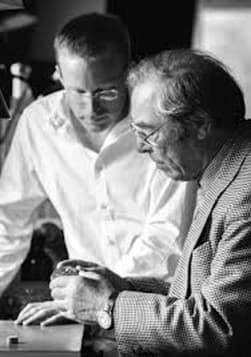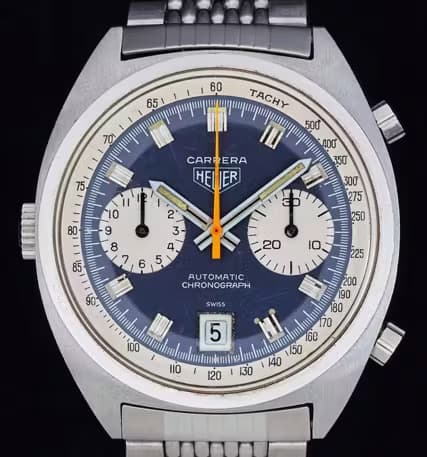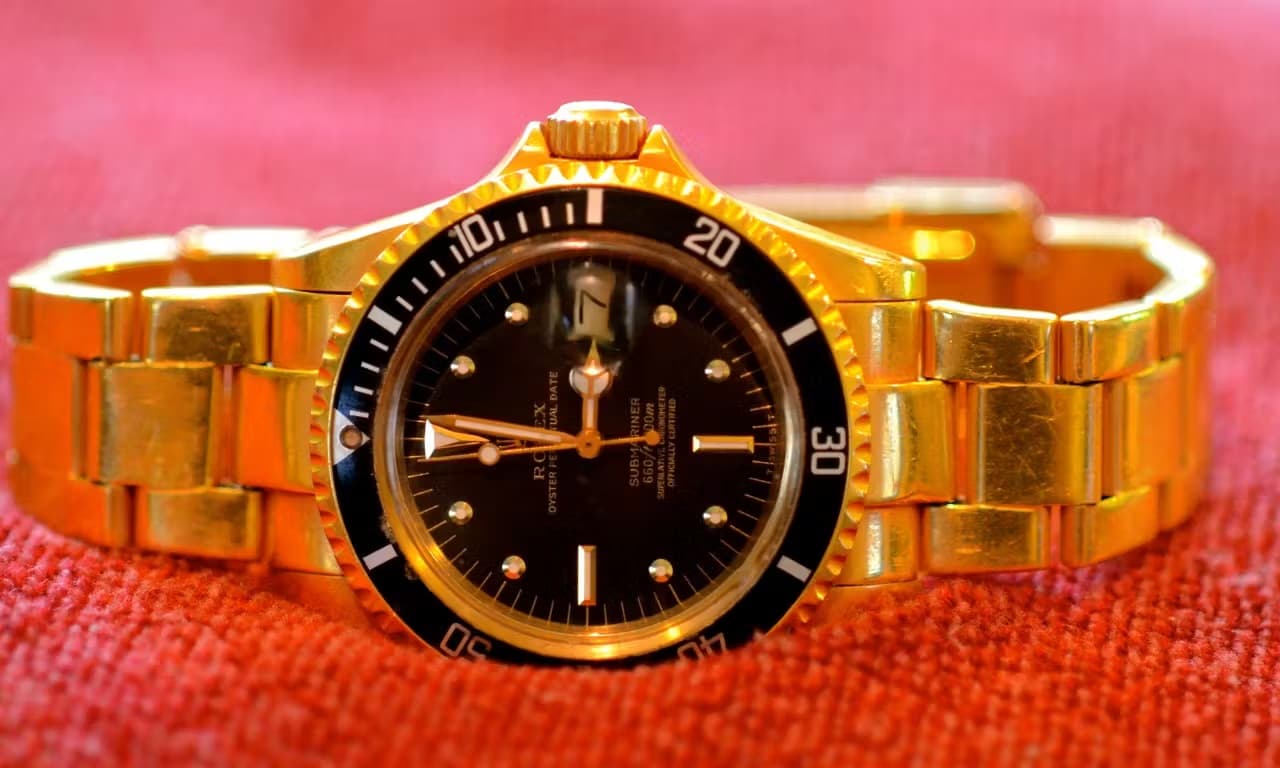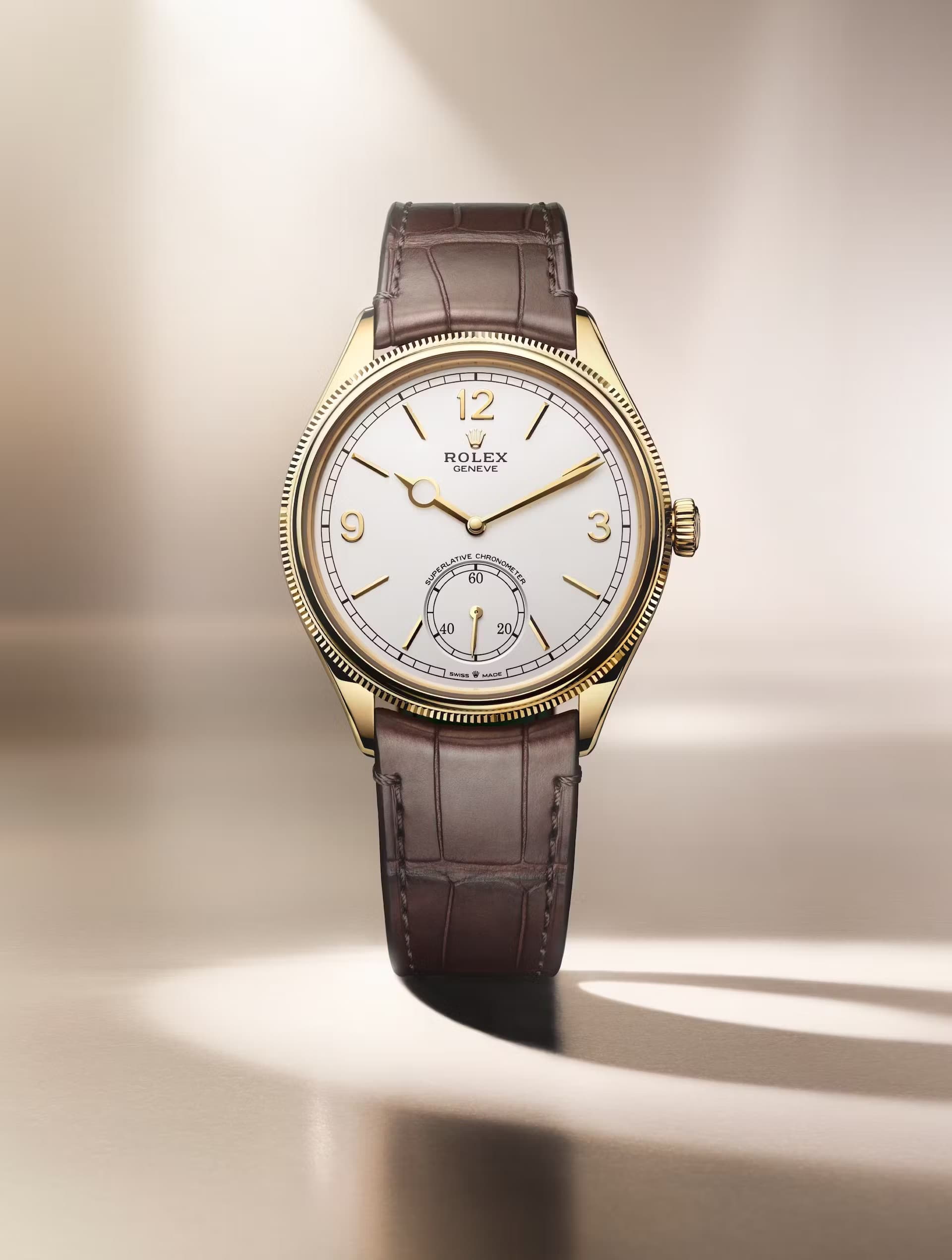Chronographs are probably the most common complication, or additional function, found on modern wristwatches. Almost every watch brand will make a few different chronographs.
If you want to see some of the wide range of chronographs available from the big luxury brands, then make sure to sign up to our latest event, which is taking place at Watches of Switzerland in London on April 12th. You can sign up here.
What Is A Chronograph?
A chronograph is a watch with a stop-watch function. It can be used to measure how much time has elapsed. It is usually started and stopped by pressing a button near the 2 o’clock position on a watch. You then reset the chronograph by pressing a button at the 4 o’clock position. If you want to learn more about how they work, here’s a quick blog post.
 You can clearly see the pusher buttons at 2 and 4 o’clock
You can clearly see the pusher buttons at 2 and 4 o’clock
What Was The First Chronograph?
The first chronograph pocket watch was designed by Louis Moinet in 1815. Its purpose was to serve as a pocket stopwatch for astronomers. It is remarkable in a few ways; firstly, it was largely unknown until 2012; secondly, it operated at a ridiculously high frequency (216,000 vibrations a minute), which is approximately 8 times faster than a modern chronograph. This meant that it was a fantastically accurate recorder of time and could record time to 1/60th of a second. A remarkable achievement.
However, until the 2012 auction of Louis Moinet’s pocket stopwatch, the honour of “world’s first chronograph” bestowed upon a French watchmaker called Nicolas Mathieu Rieussec. He had created and named a device called a “chronograph” in 1821 to accurate time horse races. The chronograph was housed in a wooden box and allowed the user to accurately time multiple horses. The chronograph had two dials to facilitate the timing of multiple horses.


What Was The First Chronograph Wristwatch?
By the early 20th Century, pocket watches were being replaced by the more convenient wristwatch. As demand for wristwatches grew, particularly driven by military and professional users, so did the demand for chronograph wristwatches.
The first wristwatch with a chronograph was released by Longines in 1913. It was the 13.33z, and was what is called a “monopusher” chronograph. This just means that a single button is used to start, stop and reset the chronograph, as well as set the time of the watch, and wind it. Breitling were hot on the heels of Longines, and released their own chronograph wristwatch in 1915. The Breitling chronograph was the first to have a separate button for operating the chronograph function.

What Was The First Automatic Chronograph Wristwatch?
Over the next five decades, many watch makers released their own versions of the chronograph wristwatch. Anywhere that it was important to accurately keep time, a chronograph could, and often was, used. Chronographs continued to be used in aviation and the military, but the 1960’s saw the start of the connection between chronographs and motor racing. This was spurred by Heuer. The brand had been putting tachymeters, a tool used in conjunction with a stop-watch to calculate speed, on racing car and aircraft dashboards during the 1960’s. In 1967, Heuer released a wristwatch with a tachymeter and a chronograph, called the Autavia, which became very popular. You can read more about Heuer, the tachymeter, and racing here.

The first watch to feature a chronograph and an automatic, self-winding, movement, was the Zenith El Primero. Before then, all chronograph wristwatches were hand-wound. The Zenith El Primero has a fascinating story, which we’ve written about here. The watch was almost lost to the quartz crisis, but an engineer hid the tools in an attic of the factory, where they were found decades later, and used to revive the model, and the watch brand itself.
A few months after the release of the prototype of the Zenith El Primero, a collaborative group of watchmakers, which included Breitling, Hamilton and Heuer, released their own automatic chronograph, called the “Project 99”. These brands had pooled expertise and resources to design an automatic chronograph movement that all of the contributing brands could use. At roughly the same time, the Japanese brand Seiko also released an automatic chronograph, called the 6139.

Modern-Day Chronographs
The past hundred years have seen a constant stream of new chronographs released; however, some of the older models quickly established as classics have remained so, and are some of the most coveted watches today. The Rolex Daytona, the Omega Speedmaster, the Breitling Top Time and the Tag Heuer Monaco, are all old designs that have not only stood the test of time, but are thriving in the modern watch market.


Continue exploring
Dive into more content from The Watch Collectors Club.








